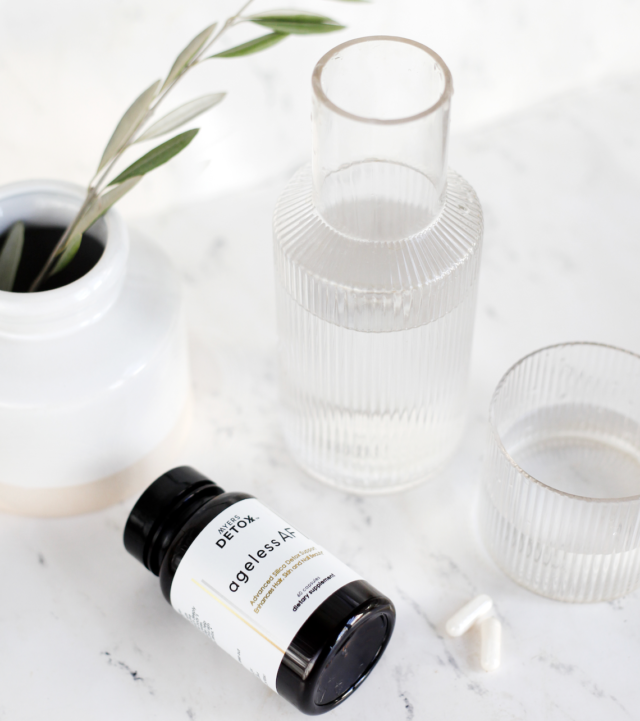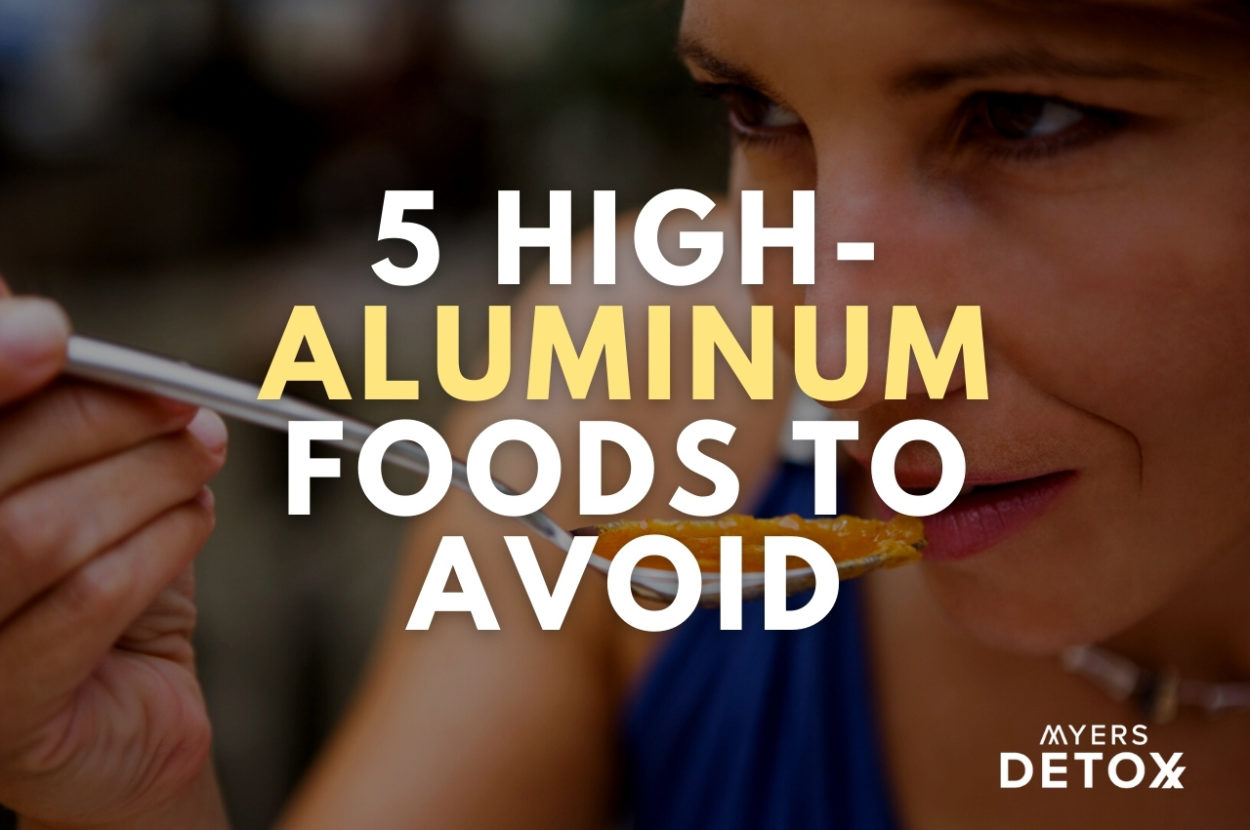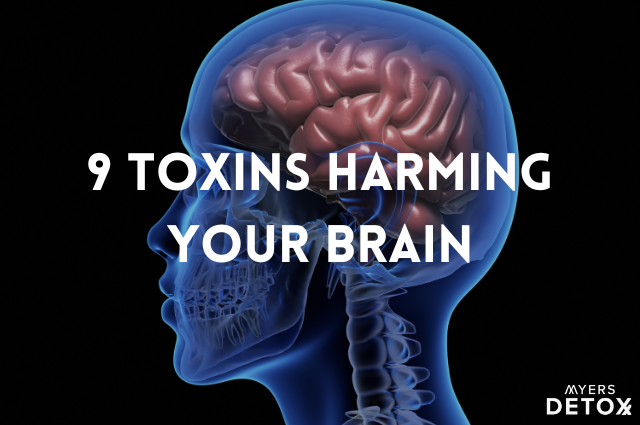You likely eat food contaminated with aluminum on a regular basis without even realizing it! So, I wanted to reveal the top foods where you could ingest this brain-toxic metal. This article covers my top five high-aluminum foods to avoid, as well as what you can do to avoid further absorption and how to support your body’s ability to detox from everyday living.
Aluminum can find its way into foods – not only from the food itself – but from how it’s prepared. For instance: aluminum in aluminum foil, pots and pans, baking sheets, and other cooking utensils, and it’s often the main covering for household appliances, from your refrigerator to your washer and dryer.
Food is the number one source of aluminum exposure [6]. Several common foods and food additives contain aluminum, and most of us absorb aluminum from our diet on a daily basis.
Beyond food, there are a number of other routes of exposure and absorption when it comes to aluminum. Most people are also slathering aluminum antiperspirant and deodorant on their underarms every day!
But today we are going to focus, specifically, on high-aluminum foods.
Symptoms of Aluminum Toxicity
Aluminum is a toxic metal, and when it makes its way into your body – be it high-aluminum foods, deodorant, or other sources – it can cause serious health problems[1].
Aluminum can be found in the brains of Alzheimer’s patients, and aluminum build-up may be a risk factor for many kinds of neurological diseases[2].
Several studies have also found that aluminum may even contribute to breast cancer[3][4].
Aluminum builds up in your body over time, and chronic, low-level aluminum exposure can cause less acute health problems. Symptoms of aluminum exposure include[5]:
- Brain fog
- Dementia
- Fatigue
- Confusion
- Muscle weakness
- Bone pain
- Bone fractures
- Slurred speech, slow speech, and other speech problems
- Slow growth (in children)
- Decreased muscle control
- Anemia
The Top 5 Aluminum-Toxic Foods to Avoid
To keep yourself safe from aluminum toxicity, it’s essential that you cut high-aluminum foods out of your diet. Here are the top five culprits!
1. Processed Cheese
Processed cheese — including American cheese — is one of the biggest contributors of dietary aluminum[7].
Processed cheeses aren’t technically cheese. They’re made by combining a small amount of real cheese with milk fat, artificial colors and flavors, salt, and sometimes whey protein.
Because processed cheeses contain so many different ingredients, they need an emulsifier — a compound that binds them all the ingredients together and keeps them shelf-stable.
Many processed cheeses (especially in frozen products) are emulsified with sodium aluminum phosphate, which your body breaks down into aluminum and absorbs in small amounts[8].
While you only absorb small amounts of aluminum from processed cheese and other high-aluminum foods, the aluminum gradually builds up in your body, nervous system and brain each time you eat them. Over the course of years, that kind of low-level aluminum exposure can contribute to serious health problems[9].
A 2005 study found that the cheese in a frozen pizza contained about 150 times more aluminum than a fresh pizza bought from a local shop[8].
If you’re going to eat cheese, choose the real thing — processed cheeses are a major source of aluminum.
2. Packaged Baked Goods
Breads, cakes, muffins, and other premade baked goods are another big aluminum source.
Many pre-packaged baked goods use a commercial version of baking powder to make their dough rise. The commercial baking powder often contains potassium aluminum sulfate, an acidic compound that activates the baking powder and increases its rising activity.
Aluminum is also commonly used as an anti-caking agent in flour. This ensures that the flour stays light and fluffy and doesn’t clump up.
Several studies have found high levels of aluminum in processed baked goods that use aluminum-based baking powder[7][10][11].
One study found that the worst offenders were frozen waffles, frozen pancakes, and boxed pancake/waffle mixes[7].
Another study found that many packaged baked goods were high in aluminum, and about 10% contained seven times the acceptable daily limit of aluminum[10]. Prepackaged pies and sweets were particularly bad.
Your best bet is to make baked goods yourself, and to check your labels to make sure you’re buying aluminum-free baking powder and organic flour.
Fortunately, most non-commercial baking powders don’t use aluminum, so as long as you’re baking from scratch, you’re likely okay.
3. Tea
Studies have found that both green and black tea leaves contain high levels of aluminum[17][18][19].
The studies also found that brewing tea leaves releases aluminum into the tea and makes it more bioavailable. Meaning that tea drinking could be an easy route for aluminum absorption.
Tea was comparable to processed cheese in terms of aluminum content and absorption rate[17], making it a significant source of dietary aluminum.
Researchers have also stated that drinking tea daily could result in a significant amount of aluminum reaching systemic circulation [33].
Aluminum may produce toxicity to the central nervous system as it binds to proteins and can cause cross-linking, damaging their function.
People with high levels of aluminum tend to have a high concentration in their brain tissue, which has led some researchers to believe that aluminum may have a role in neurodegenerative disease(s).
Some neurotoxic effects that have been correlated with aluminum include impaired learning, memory, concentration, as well as disorientation, also known as brain fog [34].
4. Cacao Powder
Cacao trees absorb aluminum, cadmium, and lead from the soil and store them in the cacao beans[20]. When the beans are ground and processed, much of the aluminum ends up in cacao powder.
When it comes to heavy metal contamination in cacao powder, the country of origin matters. A 2016 study compared the heavy metal content of cacao samples from four of the largest cacao producers in the world: Cameroon, Ecuador, Nigeria, and Ghana.
The study found that cacao from Ghana had the highest concentration by far, while Cameroon and Ecuador had the lowest concentrations[21].
When you buy cacao powder, check the label for its country of origin. Try to choose cacao sourced from South America or Cameroon — they have the lowest risk of aluminum contamination.
I personally love Cacao Bliss. It’s ’s a delicious, high-quality chocolate that is packed with antioxidants and superfoods. Learn more about it here.
5. Non-Dairy Creamer
Single-serving packets of non-dairy creamer are another source of toxic aluminum.
Non-dairy creamer packets tend to clump and are also prone to spoilage because they’re unrefrigerated. To fix the problem, most manufacturers use sodium aluminosilicate, an anti-caking agent and preservative which provides a significant amount of absorbable aluminum per serving[7].
Instead of non-dairy creamer, stick to using real milk, cream or nondairy creamers like coconut creamers. I personally love raw, organic grassfed cream.
If you want to learn more about toxins in nondairy creamer I wrote an article about that too!! You can read that here.
Don’t forget that antacids are significant sources of dietary aluminum if one consumes these for heartburn on a regular basis. Better to fix the underlying root cause of heartburn (low stomach acid, dehydration and food sensitivities most commonly) than taking these toxic aluminum bombs.
How to Maintain Your Health and Support Your Body’s Natural Detox Pathways
Heavy metals tend to hide away in hard-to-reach parts of your body, quietly building up over time. Aluminum accumulates mostly in bone, where it can stay for years or even decades[22][23].
Aluminum also builds up in your brain, and may even put you at increased risk of cognitive decline and neurodegenerative conditions[2][24].
Furthermore, studies show that those exposed to high levels of aluminum in drinking water have a greater risk of impaired brain health.
That’s why the best thing you can do for your health is to take steps to prevent metal absorption in the first place – and hopefully this list of high-aluminum foods is a good place to help you get started!
I also recommend supporting your body’s innate ability to trap and gently eliminate these adverse substances.
But how?
I have found that a special form of silica called orthosilicic acid (or OSA) is incredibly effective in aiding your body’s natural ability to keep your toxic metal burden low and help you maintain normal health.
Why is this? Because silica is a mineral that promotes your body’s natural ability to trap and excrete the impurities that damage your system – specifically targeting your brain tissue[31] – so that they are not absorbed elsewhere in your body.
 This potent capacity of silica to detoxify the body by facilitating the body’s natural excretion of the pollutants from your system is why I included orthosilicic acid (OSA) in my Ageless AF formula.
This potent capacity of silica to detoxify the body by facilitating the body’s natural excretion of the pollutants from your system is why I included orthosilicic acid (OSA) in my Ageless AF formula.
In addition to its beauty-boosting properties, Ageless AF gently works to keep a range of trivalentmetals (like aluminum) out of the body so that you can support and maintain your health in the face of our toxic world.
If you’ve been consuming foods that are potentially contaminated with aluminum, don’t wait to protect yourself and avoid further metal absorption. Grab your bottle of Ageless AF today[32].









